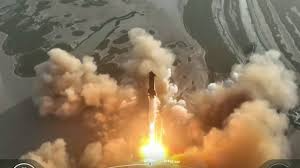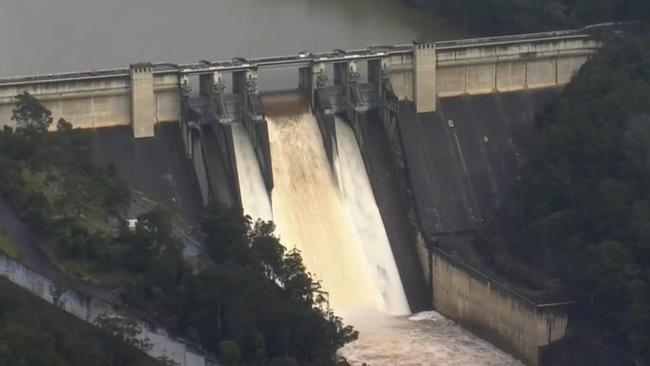
SpaceX Starship 36 fails static fire
SpaceX Starship 36 Suffers Dramatic Static Fire Explosion, Raising Stakes for Orbital Ambitions
1. A Crucial Test Ends in Catastrophe
In a startling setback for SpaceX’s lunar and Mars ambitions, the Starship 36 prototype exploded during a static fire test at the company’s Boca Chica Starbase. The test, expected to be routine, instead became a fiery spectacle engine ignition was followed within seconds by an enormous explosion that rippled across the test stand, engulfing the vehicle’s base. Debris scattered through the Texas scrub, and the explosion was powerful enough to rattle the ground and be heard miles away. Though the test crew evacuated safely and no injuries were reported, the magnitude of structural damage has sparked both concern and scrutiny across the aerospace industry.
2. A Pivotal Phase in Starship Development
Starship 36 was part of SpaceX’s high stakes effort to complete a fully integrated orbital class Starship stacked atop its Super Heavy booster. Unlike earlier test articles focused on hop tests, Starship 36 was nearing final preparation for an orbital test flight capable of validating the entire system, including atmospheric reentry and recovery strategies. The static fire stage is critical for verifying engine performance, fuel pressurization, and structural integrity in a controlled setting before full launch. Its failure not only destroys the prototype but delays the hard earned momentum toward orbital certification.
3. Anatomy of the Failure
Early video shows the Raptor engines igniting properly, followed by irregular combustion and a sudden, violent backfire. Engineers believe the failure originated within the engine plumbing or turbopump system, where unexpected pressure fluctuations or component rupture led to a rapid detonation. This type of failure has precedent in SpaceX’s iterative testing philosophy; SN9 and SN11 also suffered engine anomalies during testing phases. However, each misstep has taught valuable lessons helping engineers refine tank design, plumbing durability, and emergency shutdown procedures.
4. Assessing the Damage and Investigation Plans
SpaceX crews wasted no time. Within hours, inspectors began evaluating salvageable hardware and conducting detailed structural scans. Downstream systems fuel pumps, cryogenic lines, and support infrastructure are being tested for heat and impact damage. Meanwhile, SpaceX technicians are preparing data feeds from onboard instrumentation, robotic systems, and ground sensors for forensic reconstruction. The FAA, responsible for launch licenses and safety oversight, is expected to scrutinize the remains before approving another static fire or orbital attempt.
5. Bigger Picture Artemis and Commercial Timelines
The explosion raises practical questions for NASA, which selected Starship as the Human Landing System for Artemis missions aimed at returning humans to the Moon. While SpaceX’s CEO Elon Musk has insisted that failure is part of rapid innovation, NASA’s schedule grows tighter and Artemis crews will demand a reliable, safe rocket. For SpaceX, every failure dissolves valuable time, both technologically and politically, as partners expect regular and predictable progress.
6. Public and Industry Reaction
Reactions have been mixed. Space enthusiasts applaud SpaceX’s transparency and repeated willingness to accept test failures. Many highlight that learning on the ground is preferable to catastrophic issues mid flight. However, skeptics point to budget considerations, questioning if a crash intensive schedule is sustainable long term. Wall Street analysts watching SpaceX’s stock linked projects, like Starlink, note that delays in Starship testing could ripple into delayed revenue from satellite deployment and lunar contract milestones.
7. Next Steps Starship 37 and Risk Mitigation
A fresh Starship prototype, SN37 (or Starship 37, depending on internal naming conventions), was already under construction in the nearby High Bay. The damage recorded from Starship 36 will likely influence revisions in SN37’s Raptor installation, plumbing safety margins, and engine shutdown sequencing software. A root cause could lead to updates in pre flight hardware checks, redundant sensors, or revised cryogenic cool down procedures. if SpaceX pauses to regroup or pushes forward rapidly depends on risk assessments, FAA approval, and internal timelines balancing ambition and safety.
8. Conclusion Resilience Defines the Path Forward
The Starship 36 explosion isn’t just a failure it’s a data goldmine. SpaceX’s playbook has long been anchored in rapid iteration build fast, test even faster, fail often, learn more. While an explosion is painful especially with billions of dollars at stake and thousands of personnel involved the incident also demonstrates the transparency and analytical rigor embedded in SpaceX’s culture. The question now is if this failure will stall their path to orbital operations or serve as a clarifying moment that accelerates safer, more resilient Starships. If history is any guide, the ashes of Starship 36 may seed tomorrow’s breakthrough.










